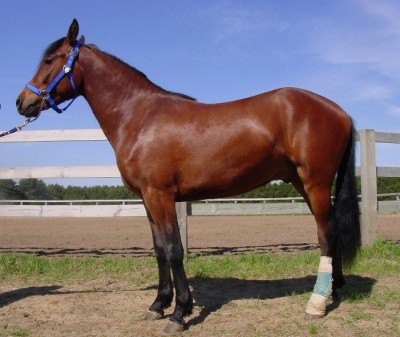Feeding Tips for Stall Rest

Regardless of the diagnosis, when stall rest is on the treatment list, adjusting your feeding program to match your horse’s lack of activity can improve the experience for both you and your horse.
Whether recovering from an injury, surgery, or other, stall rest is generally prescribed to limit the movement of your horse to aid in the body’s natural healing process. Often times, when a horse’s activity level moves from work or competition to that of quiet stall rest, it takes a period of adjustment for him to settle into the new routine.
Altering his feeding program to match this now sedentary lifestyle will help him make the transition. Please note: all feed and forage changes should be made gradually through a period of 5-7 days so as not to disrupt the digestive system.
For the horse sentenced to a period of stall rest, the name of the game is energy management. If he is an athlete who is used to getting high calorie feed and plenty of exercise, transition him to a lower calorie feed or ration balancer, with a high quality grass forage. Reducing the energy he receives from his feed will help manage his weight and behavior.
Selecting a feed that is balanced for amino acids will offer the body aid in the development and repair of tissues, especially muscle and connective tissue. Fortified, balanced levels of vitamins and minerals will aid in immune response as well as minimize bone density loss. Feed that is fortified with prebiotics, such as yeast culture, and probiotics can aid in the balance of the gut bacteria, overall absorbtion of nutrients and supports the immune system. Omega 3 fatty acids in the feed can also provide support for the immune system as well as help manage inflammitory response in tissue.
Monitor his body condition score and weight throughout stall rest and make feed amount adjustments as needed. If he begins to gain weight, reduce his feed amount to the lowest advised amount from the feed manufacturer.
If he drops too much weight, slowly increase the feed amount, making sure to stay within the feeding directions. Increasing the amount of hay can also provide benefits, though keep watch that he doesn’t start wasting. Health complications or hay quality concerns aside, uneaten hay is an indication that he is being fed too much per meal.
In addition to providing much needed fiber and calories, hay in the stall can also provide a distraction, curbing destructive behavior such a cribbing, weaving and pawing. Consider providing stall toys, such as a ball or treat roller to keep his mind occupied and prevent bad stall habits from forming.
Pending the doctor’s orders, hand walking is a common method of providing limited exercise while reducing the chances of further damaging the injury or wound. Hand walking is also a great way to spend time with your horse, especially if stall rest has taken him away from his normal job.
Once the period of stall rest is completed and he goes back to ‘work’, transitioning his feed back to the ‘normal’ energy levels should be done with even more caution than transitioning the energy down. For advise on your specific situation, please discuss with a qualified feed consultant or your veterinarian.
